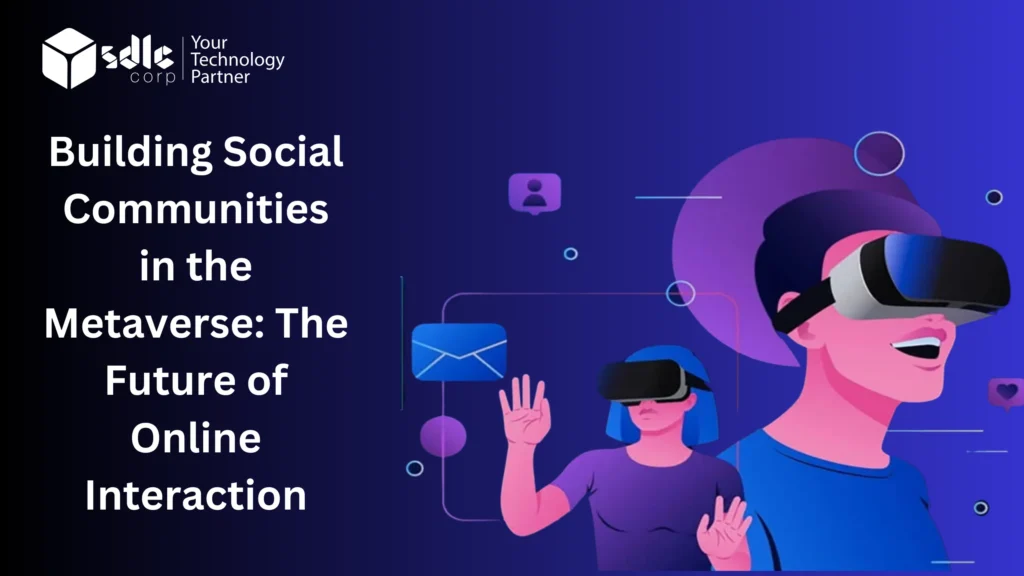The metaverse has become one of the most exciting innovations in the digital world, reshaping gaming experiences through immersive, interactive, and decentralized environments. Metaverse gaming experiences combine virtual reality (VR), blockchain technology, and artificial intelligence (AI) to create persistent virtual worlds where players can socialize, trade, and participate in limitless adventures.
What is Metaverse Gaming?
Metaverse gaming refers to a shared digital space that integrates gaming with virtual environments, allowing players to interact in real-time. Unlike traditional online games, metaverse gaming provides an interconnected experience where users can own digital assets, engage in economies, and explore evolving virtual landscapes.
Key Features of Metaverse Gaming
| Feature | Description |
|---|---|
| Virtual Reality (VR) Integration | Enhances gaming through immersive environments. |
| Blockchain-based Ownership | Players own and trade digital assets as NFTs. |
| Interoperability | Items and avatars can be used across multiple games. |
| Decentralized Economies | Players earn and spend cryptocurrencies within the game. |
| Persistent Digital Worlds | Game environments evolve even when players are offline. |
Types of Metaverse Gaming Experiences
1. Virtual Reality (VR) Gaming
- These games provide a first-person immersive experience where players use VR headsets to navigate digital worlds.
- Examples: Horizon Worlds, VRChat
2. Play-to-Earn (P2E) Games
- Players earn cryptocurrencies or NFTs by completing missions and engaging in the game economy.
- Examples: Axie Infinity, The Sandbox
3. Social Metaverse Platforms
- Focus on social interactions and events within digital environments.
- Examples: Decentraland, Somnium Space
4. Massive Multiplayer Online (MMO) Metaverse Games
- Open-world games where thousands of players interact simultaneously.
- Examples: Star Atlas, Illuvium
Comparison of Popular Metaverse Gaming Platforms
| Platform | Technology | Game Type | Currency Used | Notable Features |
| The Sandbox | Ethereum | P2E | SAND | Land ownership, NFT-based assets |
| Decentraland | Ethereum | Social Metaverse | MANA | Virtual events, real estate trading |
| Axie Infinity | Ronin Blockchain | P2E | AXS, SLP | NFT creatures, battle-based earnings |
| Star Atlas | Solana | MMO Metaverse | ATLAS | Space exploration, trading economy |
| Somnium Space | Ethereum | Social VR | CUBE | VR real estate, NFT marketplace |
Advantages of Metaverse Gaming Experiences
1. Immersive and Interactive Gameplay
- Advanced VR and AI create lifelike environments, enhancing player engagement.
2. True Ownership of Assets
- Players own in-game assets as NFTs, which can be traded or sold.
3. Decentralized Economies and Earning Potential
- Play-to-Earn models allow users to generate real income through gaming.
4. Cross-Platform Interoperability
- Avatars and assets can be used across multiple metaverse platforms, enhancing flexibility.
Challenges of Metaverse Gaming
| Challenge | Solution |
| High Cost of VR Equipment | More affordable VR headsets are being developed. |
| Scalability Issues | Layer-2 blockchain solutions help reduce congestion. |
| Cybersecurity Risks | Improved blockchain security measures enhance safety. |
| User Adoption | Simplified onboarding for non-tech users promotes growth. |
Future of Metaverse Gaming
As technology advances, metaverse gaming will evolve into hyper-realistic virtual worlds with AI-driven characters, blockchain-secured transactions, and seamless real-world integration. The next decade will likely see further innovation in haptic feedback, brain-computer interfaces, and decentralized governance for virtual economies.
Conclusion
Metaverse gaming is revolutionizing digital entertainment, blending immersive experiences with blockchain-based ownership and decentralized economies. With increasing adoption, the metaverse is set to redefine how we play, socialize, and interact in virtual worlds. As technology matures, gaming in the metaverse will become even more engaging, offering limitless possibilities for players worldwide.


